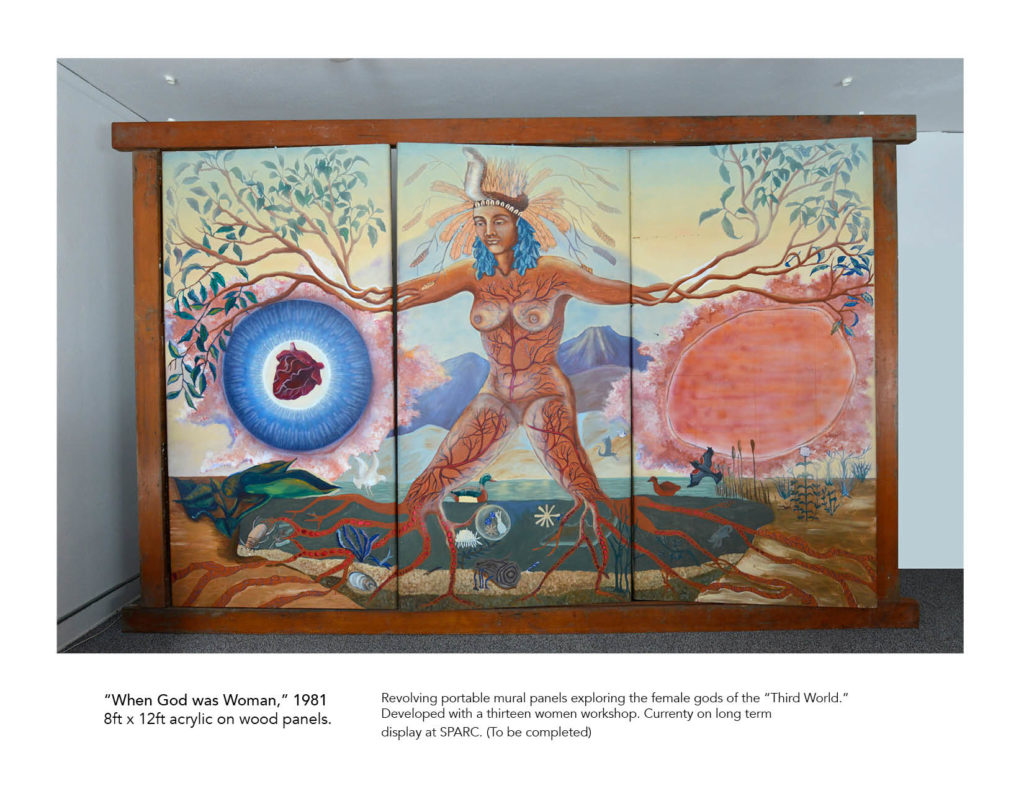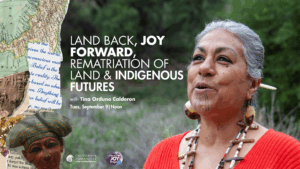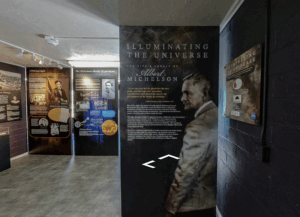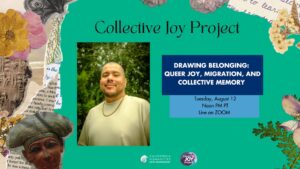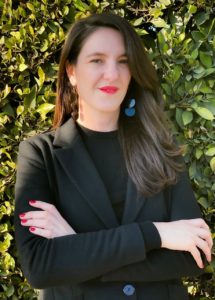
Gabriela Urtiaga, Chief Curator of the Museum of Latin American Art, is the Project Director for Judith F. Baca: Memorias de Nuestra Tierra, a Retrospective. Supported by a Humanities for All Project Grant, this project encompasses an 11,000-sq. Ft. exhibition of over 110 works presented in three galleries by Judith F. Baca, an internationally renowned Los Angeles-based Chicana muralist and activist. Also included is a robust public programming schedule, numerous K-12 educational activities, and a 200-page publication cataloging Baca’s work, with scholarly essays written by Gabriela Urtiaga and the project’s Humanities Advisors. In this interview, we ask Gabriela to share more about who Judy Baca is and why she inspired this project.
For readers who are not familiar with Judy Baca, please tell us a little about who she is and her place in the art world.
Judy Baca is one of the most remarkable Chicana artists and activists based in Los Angeles. She studied with one of the masters of muralism, David Alfaro Siqueiros. Judy fundamentally changed the vision and the approach of the mural movement community, creating the UCLA/SPARC Digital Mural Lab as a new tool for creating public art, a wonderful union of state-of-the-art technology and community-based public art.
What inspired MOLAA to do this project, and how long has it been in development?
MOLAA is very proud to present and share this project with our audience because Judy is a strong representation for many women artists. She brings together a powerful form of creation, knowledge, and a lifetime of stories and experience. She is an inspiration, and she loves to work with the community and youth. MOLAA’s Curatorial team has been working for almost three years with Judy Baca, the guest curator, and the SPARC team.
Can you give our readers a behind-the-scenes glimpse into the exhibit and programs that will launch this summer?
Judy Baca has been included in major national group exhibitions, as well as many acclaimed solo exhibitions. This will be the first exhibition to examine the artist’s prolific career over a span of 40-plus–years, highlighting both her public art initiatives and more personal works, not previously shown in one exhibition.
What do you hope visitors will take away from the exhibit and programs?
We want visitors to enjoy the experience, contemplate the possibilities presented in this exhibition. we want them to think about the many current and pertinent conversations related to her art. During the past decade, art as a vehicle for protest and social justice has gained incredible salience. It is now part of any comprehensive discussion about contemporary arts in the U.S.
About the exhibition:
The Judith F. Baca exhibition, the first comprehensive survey on the artist, will feature an immersive mural installation using 3-D mapping technology, photography, and video. A Community Education Series, led by practicing artists, educators, and humanities experts, will provide interactive humanities learning experiences, both free and fee-based, to engage students, families, educators, and the public. Slated to open at the Museum of Latin American Art (MOLAA) in July 2021, the exhibition will travel to one or more U.S. venues and Latin America.
About Gabriela Urtiaga (Project Director):
Gabriela is an Art Historian specialized in Latin American and Latino art with over 15 years of professional experience in Argentina and abroad. She has developed the exhibition, and artistic projects in collaboration with national and international institutions, such as CCK in Argentina, Curitiba Biennial in Brazil, MACRO Museum in Roma, CentroCentro in Madrid, and Foundation Cartier pour l’art Contemporain in Paris. Gabriela serves as the Chief Curator of MOLAA. She oversees the successful execution of the exhibition in its entirety, along with writing the introduction to the published catalog of Judy Baca’s work. She will oversee all aspects of the exhibition planning, the project team, and the overall project workflow. Instagram: @gabyurtiaga @molaa.art.
This project is supported by a Humanities for All Project Grant. Learn more about MOLAA’s exhibitions here.
